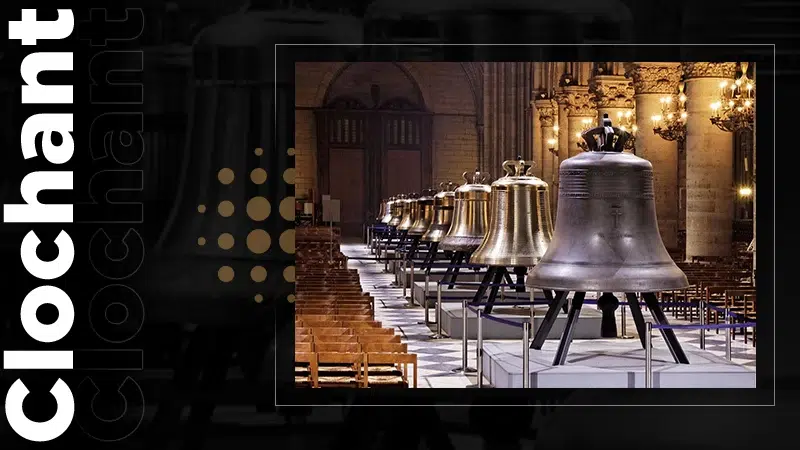Introduction
In the heart of historic cities, a distinct and captivating sound often graces the air, captivating the senses and evoking a sense of timeless wonder. This enchanting melody is the ringing of the clochant, a unique architectural feature that has played a pivotal role in shaping the cultural and social fabric of communities around the world. Join us as we delve into the fascinating world of the clochant, uncovering its rich history, architectural significance, and enduring relevance in the modern era.
Etymology and Early Usage
The term “clochant” has its roots in the French language, derived from the word “cloche,” meaning “bell.” This linguistic connection reflects the core function of the clochant as a bell tower or belfry, structures that have been integral to the architectural landscape of many European cities since the Middle Ages.
The origins of the clochant can be trace back to the early Christian era, when bell towers were constructe to serve as a means of calling the faithful to prayer and marking the passage of time. These structures, often attached to churches or cathedrals, became symbols of community and religious devotion, their resonant tones echoing through the streets and serving as a unifying force for the local populace.
Architectural Significance
The clochant, with its distinctive silhouette and intricate design, has long been celebrate as a masterpiece of architectural engineering and artistry. These structures were not merely functional; they were carefully crafte to embody the aesthetic sensibilities and cultural values of the societies that built them.
The design of the clochant often reflected the architectural styles of the region, ranging from the ornate Gothic spires of Northern Europe to the more minimalist bell towers of the Mediterranean. Regardless of their specific style, clochants were typically constructed using durable materials such as stone, brick, or even wood, ensuring their longevity and enduring presence in the urban landscape.
One of the most captivating aspects of the clochant is its acoustic properties. The carefully calibrated arrangement of bells and their intricate mechanisms allowed for the creation of harmonious chimes that could be hear for miles, serving as a auditory landmark and a source of civic pride for the local community.
Cultural and Social Impact
The clochant’s influence extends far beyond its architectural significance, as it has played a crucial role in shaping the cultural and social fabric of the communities it has served. These bell towers have been integral to the rhythms of daily life, marking the passage of time, the arrival of special occasions, and the commemoration of significant events.
In many cultures, the ringing of the clochant has been imbued with symbolic meaning, serving as a call to prayer, a signal of celebration, or a solemn reminder of the community’s shared history and values. The sound of the bells has also been known to inspire artistic expression, with composers and poets drawing inspiration from the captivating melodies that emanate from these architectural wonders.
Moreover, the clochant has often served as a gathering place for the community, a hub where people would congregate to exchange news, celebrate festivals, or simply enjoy the soothing sounds of the bells. This social function has helped to foster a sense of belonging and shared identity among the local populace, reinforcing the clochant’s role as a cultural touchstone and a symbol of community resilience.
Modern-Day Relevance
In the face of rapid urbanization and technological advancements, the clochant has managed to maintain its relevance and appeal in the modern era. While some of these historic structures have fallen into disrepair or been repurpose, many have been meticulously preserve and restore, ensuring that their distinctive silhouettes and enchanting sounds continue to captivate and inspire new generations.
Today, the clochant is not only a cherished architectural landmark but also a testament to the enduring power of tradition and the importance of preserving cultural heritage. As cities strive to balance progress and preservation, the clochant has become a symbol of the delicate balance between the past and the present, serving as a reminder of the rich history and enduring values that have shaped the communities we inhabit.
Moreover, the clochant has become a source of fascination and inspiration for architects, historians, and cultural enthusiasts, who continue to study and explore the intricate details of these structures, uncovering new insights into the ingenuity and artistry of their creators.
Conclusion
The clochant, with its captivating sound and enduring architectural presence, has woven itself into the fabric of countless communities around the world. From its humble beginnings as a means of calling the faithful to prayer to its current status as a cherished cultural landmark, the clochant has proven to be a resilient and adaptable feature of the built environment, a testament to the enduring power of human creativity and the importance of preserving our shared heritage.
As we bid farewell to the enchanting melodies of the clochant, we are left with a renewe appreciation for the rich tapestry of history, culture, and community that these structures have helpe to weave. Whether you are a seasoned traveler or a curious local, the clochant beckons you to pause, listen, and immerse yourself in the timeless charm of these architectural marvels. So, let the ringing of the bells guide you on a journey of discovery, and unlock the secrets that the clochant holds within.
FAQs
Q: What is the primary function of a clochant?
A: The primary function of a clochant is to serve as a bell tower or belfry, often attached to a church or cathedral, used to call the faithful to prayer and mark the passage of time.
Q: How do the architectural styles of clochants vary across different regions?
A: The architectural styles of clochants can vary significantly across different regions, reflecting the local cultural and aesthetic sensibilities. For example, the ornate Gothic spires of Northern Europe contrast with the more minimalist bell towers of the Mediterranean.
Q: What is the significance of the clochant’s acoustic properties?
A: The carefully calibrated arrangement of bells and mechanisms in a clochant allows for the creation of harmonious chimes that can be hear for miles, serving as an auditory landmark and a source of civic pride for the local community.
Q: How have clochants influenced the cultural and social fabric of communities?
A: Clochants have played a crucial role in shaping the cultural and social fabric of communities, serving as a call to prayer, a signal of celebration, and a symbol of shared history and values. They have also served as gathering places for the community, fostering a sense of belonging and shared identity.
Q: What efforts are being made to preserve the legacy of clochants in the modern era?
A: Many historic clochants have been meticulously preserve and restore, ensuring that their distinctive silhouettes and enchanting sounds continue to captivate and inspire new generations. The clochant has become a symbol of the delicate balance between progress and preservation, inspiring architects, historians, and cultural enthusiasts to study and explore these architectural marvels.






